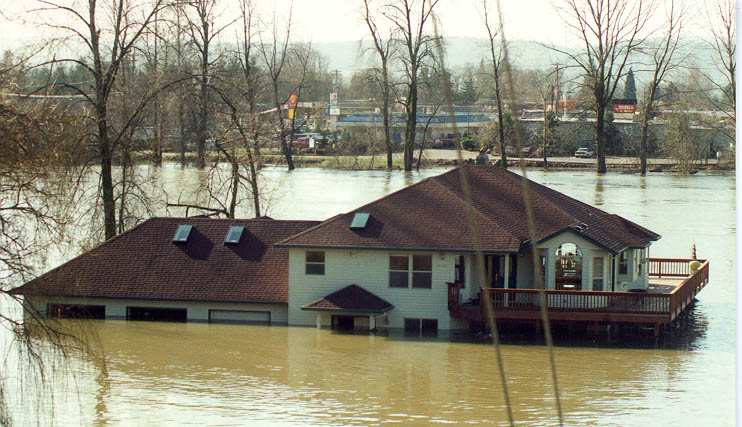A home near Woodland during the February 1996 flood.
Flooding is the nation’s most common and costliest disaster. Ninety percent of all U.S. disasters involve some flooding.
During the past 30 years, flooding in the U.S. has killed an average of 82 people a year and caused $7.96 billion a year in property damage.
According to national statistics, homes inside high-risk flood areas have a 26 percent chance of being damaged by flooding over the life of a 30-year mortgage, compared with a 4% chance of fire damage.
Clark County’s last big flood, in February 1996, damaged or destroyed nearly 300 homes and caused $25 million in property losses.
- Clark County flood history
- Columbia River and flooding
- Flood protection newsletter (PDF)
- Sandbagging techniques, U.S. Army Corps of Engineers Northwest Division
The Federal Emergency Management Agency's website has information about flooding, flood insurance and flood insurance rate maps.
Flood advisory, watch and warning
The National Weather Service uses the following terms when warning residents about potential flooding:
- Flood Advisory: Be Aware: A Flood Advisory is issued when a specific weather event that is forecast to occur may become a nuisance. A Flood Advisory is issued when flooding is not expected to be bad enough to issue a warning. However, it may cause significant inconvenience, and if caution is not exercised, it could lead to situations that may threaten life and/or property.
- Flood Watch: Be Prepared: A Flood Watch is issued when conditions are favorable for a specific hazardous weather event to occur. A Flood Watch is issued when conditions are favorable for flooding. It does not mean flooding will occur, but it is possible.
- Flood Warning: Take Action! A Flood Warning is issued when the hazardous weather event is imminent or already happening. A Flood Warning is issued when flooding is imminent or occurring.
Before, during and after flooding
Residents, particularly those living in flood-prone areas, should review the following:
